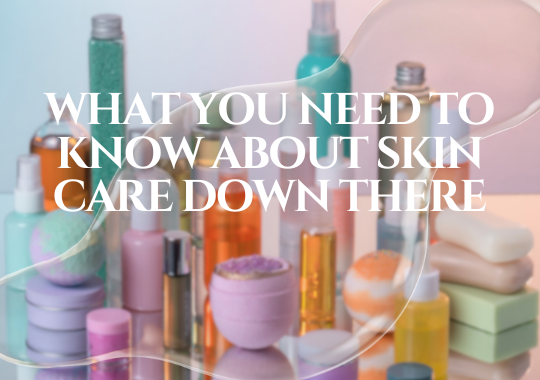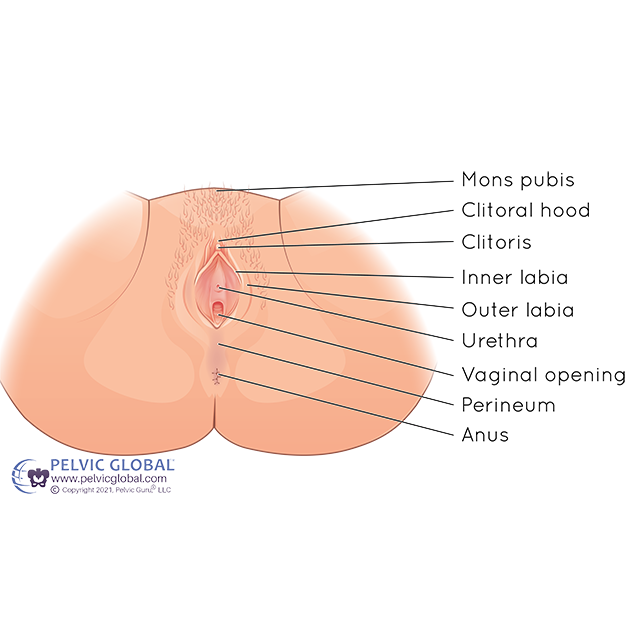
Are you confused about skincare? Do I use a toner? Are oils good? When am I supposed to exfoliate? Moisturize? How often? And what about products? Are you feeling overwhelmed yet?
Us, too!
Thankfully, we CAN demystify skin care for your vulva and vagina! Yes, our genitals can benefit from their own skincare routine. Check out our guide below to learn more.
(Bloggers note: this is pertaining to folks AFAB as caring for a neovagina after vaginoplasty is a little different- look for this blog soon!)
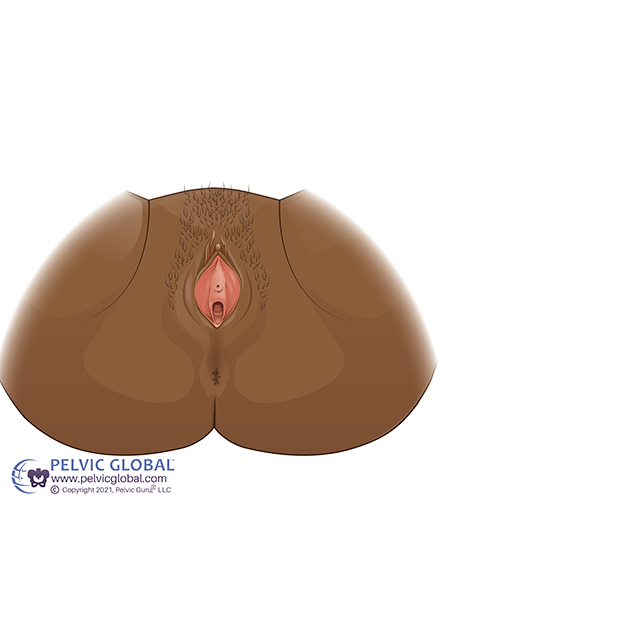
Image used with permission from Pelvic Guru®, LLC www.pelvicglobal.com
Step One: Clean
Most of us have heard that the vagina “is like a self-cleaning oven.” Cleaning the inside of the vagina is not necessary-douches and soaps can go directly into the trash. The vaginal microbiome is a complex system of good bacteria that works SO hard to keep the vagina acidic and keep bad bacteria and yeast at bay! Yes, you read that right: your vagina’s pH should be between 3.8 and 4.5. Cleaning and scrubbing internally wipe away the good bacteria.
Vulvar hygiene may look a little different (remember the vulva is on the outside). For some of us, warm water is enough. For others, we may use a cleanser. All of our skin is covered in an acid mantle. The acid mantle is a thin filmy layer that helps protect against invaders. Using harsh soaps, plastic loofahs, and washcloths may disrupt this acid mantle. (Side note: those plastic loofahs also harbor A LOT of bacteria). Cleansers should be paraben, scent, and dye-free, and applied with clean hands to the external vulva (avoiding the vaginal opening), then rinsed well with warm water. Options include Cetaphil Gentle Body Wash, Good Clean Love Balance Moisturizing Wash, and, Honey Pot Sensitive Wash.
Step Two: Moisturize and Protect
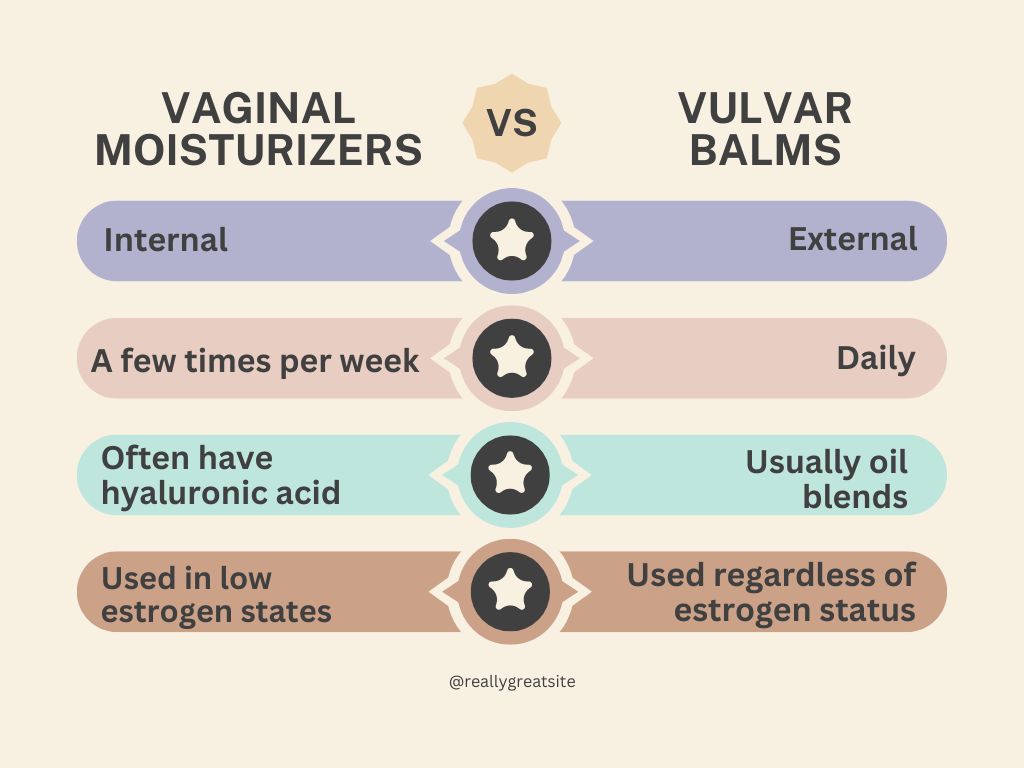
To avoid confusion, we’ll explain the differences between vaginal moisturizers and vulvar balms:
Vaginal moisturizers are formulated to go inside the vagina, typically a few times per week. Moisturizers are typically only needed in low estrogen states (peri- and post- menopausal, long-term oral contraceptive use, and while breastfeeding). Vaginal moisturizers often contain hyaluronic acid- remember, an acidic vagina is a happy vagina! There are other conditions and times where vaginal moisturizing may be indicated; make sure to talk to your physician or physical therapist!
Vulvar balms are formulated to go externally on the vulva, can be applied daily to provide a protective layer, and are often used regardless of estrogen status. Balms are often oil blends used to protect the skin’s natural acid mantle.
Link to our product page: https://carolinapelvichealth.com/products/
Vaginal moisturizer options: Bonafide Revaree, Hyalo-Gyn, Damiva Mae Vaginal Moisturizer, Good Clean Love Bionourish Moisturizing Gel.
Vulvar balm options: Vmagic Vulva Balm, Intimate Rose Enchanted Rose Vulvar Balm, Aquaphor, Rosebud Woman Honor Vulvar Balm.
Step Three: Lubricate
Even if you’ve taken all the steps above, you’re going to want to have a great vaginal lubricant on hand for intimacy! Lubricants may be water-based, oil-based, petroleum-based, or silicone-based. We do not typically recommend oil and petroleum-based products as these can disrupt that lovely vaginal microbiome.
Lubrication and moisturization sound alike but they are a little different. And to add to the confusion, some lubricants MAY be used as a moisturizer. For example, water-based lubricants can be used as moisturizers.
Lubricant options- Slippery Stuff, Good Clean Love bionude Personal Lubricant, UberLube, Yes WB.
https://carolinapelvichealth.com/products/
Step Four: Hydrate
Yes, your hydration status impacts all of your skin health including the vulvovaginal skin. Drink your water!
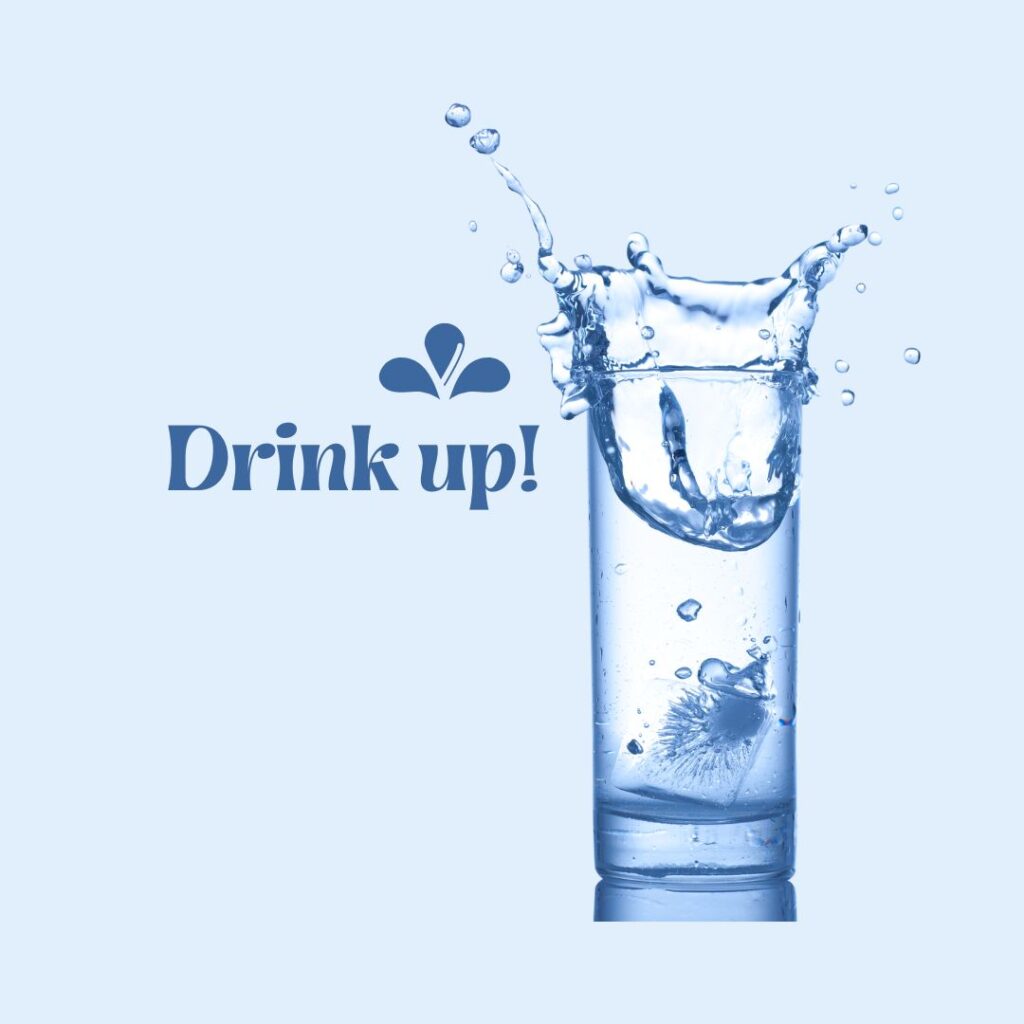
If you want to learn more about how to care for your vulva, vagina and pelvic floor, call us at 919.571.9912 and schedule your first visit with one of our doctors of physical therapy!

